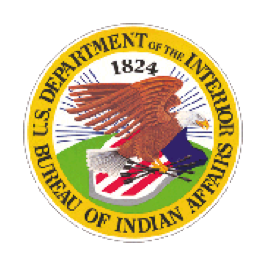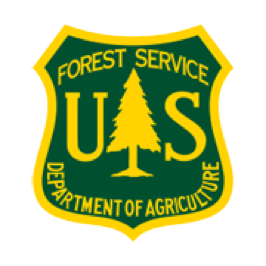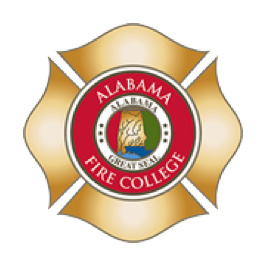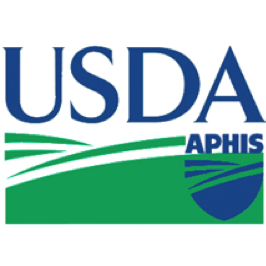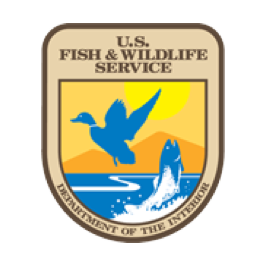Fall 2022 – From the Eagles Nest Newsletter
From the Eagle’s Nest
Fall 2022
This Fall, NAFWS hosted conferences in the Pacific, Southwest, and Great Lakes Regions, and with new funding, we will host Tribal Climate Resilience Workshops at upcoming events!
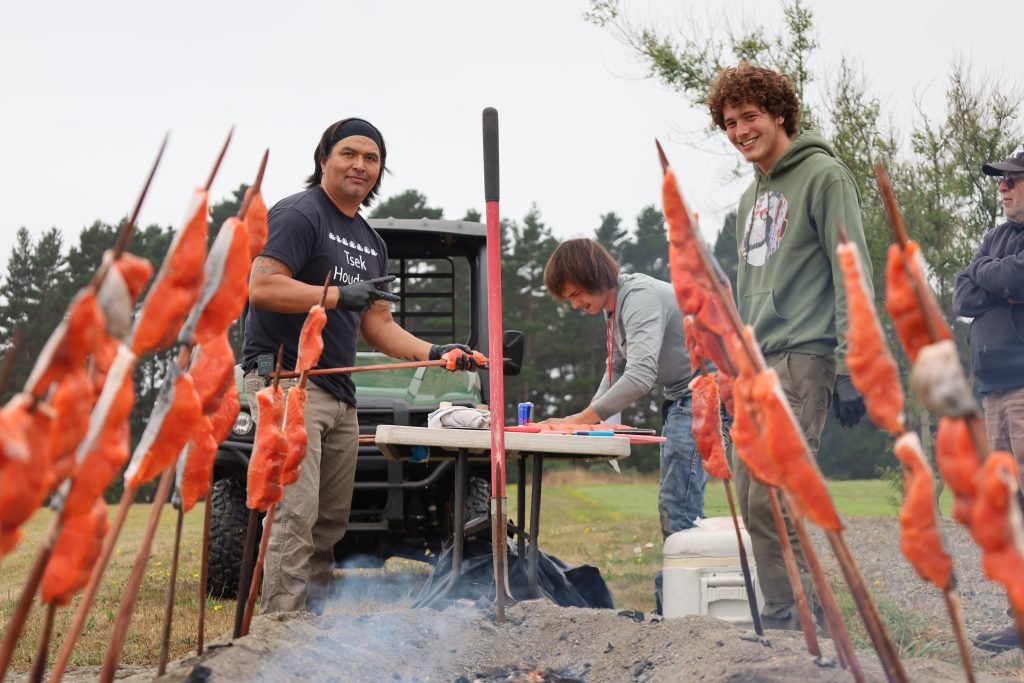
Featured Articles
Message from the President
Message from the Executive Director
Fall 2022 Regional Conferences
2022 National Summer Youth Practicum & Alumni Spotlight
NAFWS Awarded $170,000 for National Tribal Climate Resilience Work
Tribal Highlight: Southwest Region Tribes are on the Forefront on Wildlife Migration
NAFWS Welcomes Four New Staff Members
Education Updates
Conservation Law Enforcement Officer Updates
CLEO Intern Gets Hands on Experience
Upcoming Events
Fish & Wildlife News: Invasive Species, Wildlife Disease, and Endangered Species
NAFWS in the News
Message from the President
It’s fall and time for change. Here on the Walker River Paiute Reservation, we’re still having weather in the 80’s and there is no change in the color of the trees yet. With that being said, I think that there needs to be some “change” within our Society leadership, meaning Board Directors. In order for an organization to stay with the times, we also need some young minds to bring some fresh and new ideas to the table. Some of us Board members have been on the Board for 10+ years; this is also good as we have the history and knowledge. There are some openings for board members in 3 regions (Alaska, Northeast, and Southeast) so now is an opportune time for some young people to step up to the plate.
I am so proud of the group of students that recently received the Society scholarships. There were some outstanding applications and it’s great to know that we have some very educated Native students going to school. One of my College Interns was one of those recipients and was very deserving. She presented at the SW Regional Conference in Santa Ana in the Climate Change workshop and in a break-out session on Sacred Sites. Her name is Crystal Miller and is a PhD student at the University of Arizona in the American Indian Studies program with a double concentration in Natural Resources Management and Federal Indian Law & Policy. Understanding that environmental degradation is fueled, and under a major threat, by the effort of human activities from mining, agriculture, and other contributing factors, she hopes to influence and implement Traditional Ecological Knowledge (TEK) as a theoretical approach and place-based education to help combat the negative impacts to natural resources in Indian Country.
We also need to start recognizing our “rookie” employees that are just starting their careers in fish, wildlife, and conservation. Let’s start appreciating the work that is being done NOW. Let’s give them a reason to stay in this field of work.
I had a heart-to-heart talk with a traditional person this morning and we talked about who is “important” in our lives….we both came up with “children and the young people”…they are the ones we need to teach and appreciate. They are our future.
I appreciate you all.
Elveda Martinez
President & SW Regional Director
Message from the Executive Director
Greetings NAFWS members, partners, and friends. It is hard to believe that summer is gone, and we are entering the fall and soon winter season, or as I like to call it “soup and casserole” season. The past few months we have had the pleasure of seeing many of our members in person through various conferences and events.
In the last three months we have celebrated increases in our funding (FNDI Press Release) and our staffing as we welcomed Kaitlyn, Christine, Chad, and Hannah to our team. We also had the delight of attending three regional conferences. It was a bit of a challenge having the Pacific and Southwest Regional Conferences in the same week, but it was such a reward to see so many people in person. I want to thank the Pueblo of Santa Ana and the Bear River Band of Rohnerville Rancheria for their tremendous hospitality during our visits. The Great Lakes Regional Conference was a huge success, despite my team’s loss at the softball game. Thank you to the Lac Courte Oreilles Band of Lake Superior Chippewa for welcoming us to their homelands.
We continue to educate on the importance of the Recovering America’s Wildlife Act (HR 2773) to Tribes and continue to hope for a vote in the Senate (S 2372) this year. Please continue to educate on the importance of Recovering America’s Wildlife Act and what it would mean for Tribal fish and wildlife programs.
Much of our July focused on providing technical assistance to Tribes with our partners from the First Nations Development Institute on the America the Beautiful Challenge Grants. We were ecstatic to learn over 25% of the grant proposals were from Tribes. We look forward to learning who the successful recipients are in November.
In addition to travel for three NAFWS Regional Conferences, I traveled to Minneapolis, MN to participate in the National Tribal and Indigenous Climate Conference and to Shepherdstown, WV at the National Conservation Training Center to participate in a wildlife health workshop. These trips helped advance our Climate Change and Wildlife Health National Initiatives.
We are excited to continue our Regional Conferences with the Northeast Regional Business meeting in Bar Harbor, ME October 18th and the Alaska Regional in Anchorage, AK October 19th. We will also begin planning for our 40th Annual NAFWS National Conference in Anchorage, AK April 24-27, 2023.
We continue to increase our capacity so that we may better serve our membership with the conservation, enhancement and preservation of Tribal fish and wildlife resources. As always, if you have ideas for the NAFWS, please contact me or your regional director(s).
I hope our paths cross soon.
Pilamaye ye,
Julie Thorstenson, PhD (Lakota)
Executive Director
Fall 2022 Regional Conferences
Fall 2022 was a busy quarter with regional conferences for the Pacific, Southwest, and Great Lakes Regions. We had a great turn out at each conference with 344 participants and 66 Tribes represented in total.
2022 Pacific Regional Conference
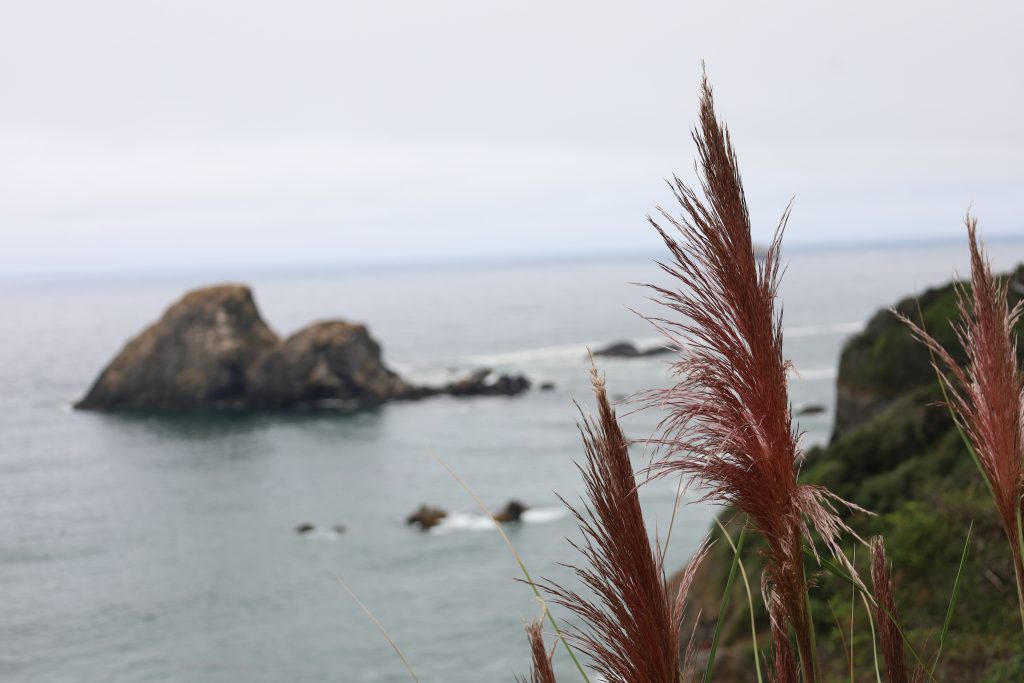
The 2022 Pacific Regional Conference was hosted by the Bear River Band of Rohnerville Rancheria at the Bear River Casino Resort in Loleta, CA on August 23-25, 2022. The conference was attended by 56 participants representing 20 Tribes along with many representatives from different agencies and organizations. Bear River was a wonderful host, and the conference was an excellent opportunity to expand outreach to northern California Tribes.
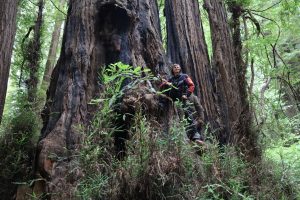 Event Highlights: Conference attendees enjoyed a Youth and Elder Panel, many insightful presentations, and an eco-cultural restoration tour of the Tribe’s ancestral territory including Humboldt Redwoods State Park. We also ate lots of salmon!
Event Highlights: Conference attendees enjoyed a Youth and Elder Panel, many insightful presentations, and an eco-cultural restoration tour of the Tribe’s ancestral territory including Humboldt Redwoods State Park. We also ate lots of salmon!
Election Results: Ted Lamebull, PR Alternate who stepped into the position as Director earlier this year, was elected PR Director and Ken Sandusky, Director of the Modoc Nation’s Homelands Project, was elected PR Alternate.
2022 Southwest Regional Conference
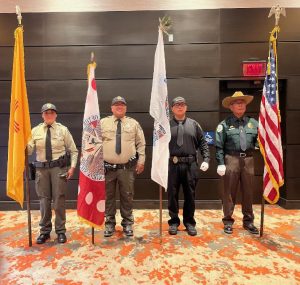
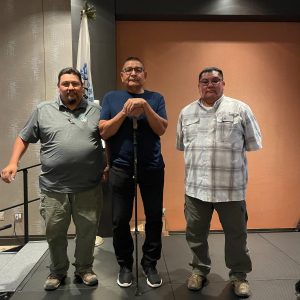
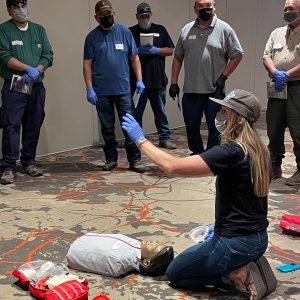
Left: Southwest Region CLEOs present flags. Middle: Southwest Region Director Darren Talayumptewa (right) and Alternates Joseph Gutierrez (left) and Selso Villeages (center). Right: Conservation officers Wilderness First Responders training.
The 2022 Southwest Regional Conference took place in Santa Ana Pueblo on August 22-25, 2022. The conference was attended by 154 participants representing 28 Tribes. The conference began with workshops on climate change and feral livestock and equine management and continued with presentations on collaboration, women in natural resource management, legislative updates, and more!
CLEO Highlights: Twenty-five CLEOs from 9 Tribes attended the conference and completed a Wilderness First Aid certification course taught by Desert Mountain Medical. Seven officers competed in the shoot competition with Kevin Myore of the Ute Tribe winning Top Gun.
Regional Awards: Joe Jojola, retired Wildlife Biologist White Mountain Apache Tribe was presented the SW Lifetime Achievement Award after 40 1/2 years of service. Rosenburg Tafoya, Fisheries Technician for the Jicarilla Apache Nation Game & Fish Department was awarded a SW Lifetime Achievement Award. He retired in September after 22 years of service with Jicarilla Apache Nation.
Election Results: Darren Talayumptewa was re-elected as the SW Region Director and Joseph Gutierrez from Santa Clara Pueblo was elected as the SW Alternate. A thank you also goes out to SW Alternate, Selso Villeages, who stepped in to assist with the conference.
2022 Great Lakes Regional Conference
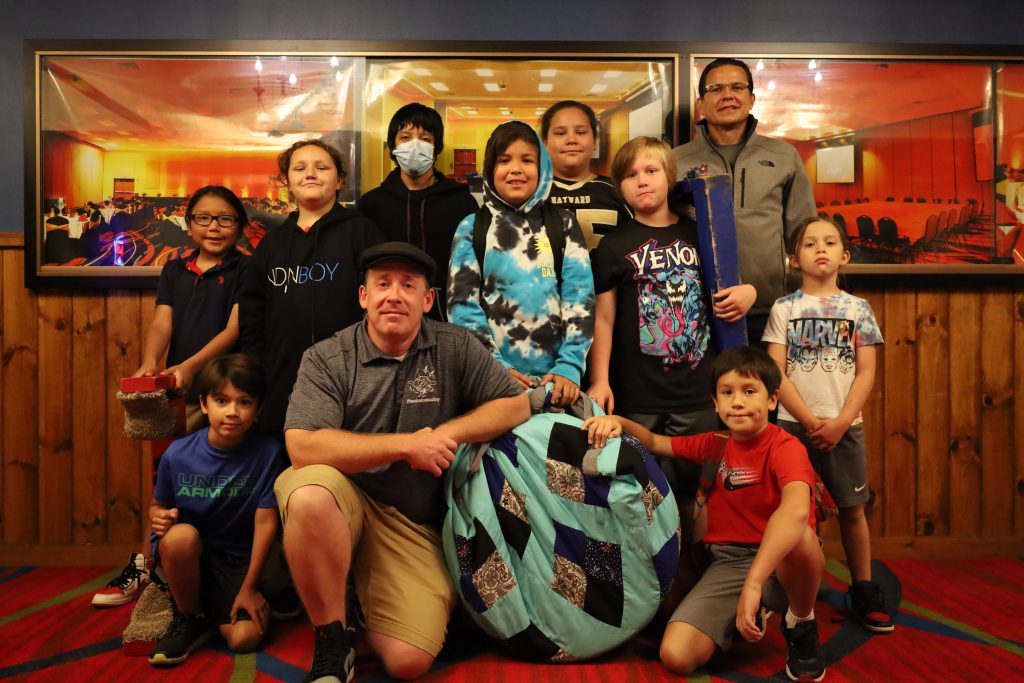
The Lac Courte Oreilles Band of Lake Superior Chippewa Indians hosted the 2022 Great Lakes Regional Conference at the Sevenwinds Casino, Lodge & Conference Center in Hayward Wisconsin on September 19-22, 2022. One-hundred and thirty-four participants representing 18 Tribes attended to celebrate the 35th Annual Celebration. The conference opened with LCO AM Veterans presenting the colors and accompanied by the Waadookodaading drum group.
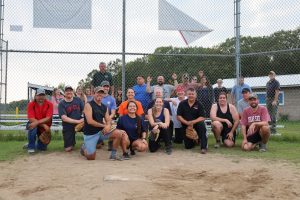 Event Highlights: The week was packed with event highlights. On Monday, attendees took part in a wildlife trapping workshop, wildlife disease sampling training, and raptor handling training, toured the LCO fish hatchery, and participated in a softball game and golf tournament. LCO hosted a Traditional Feast with entertainment from the Woodland Dance Troupe and Tribal Historic Preservation Officer Mark Thayer gave a tour of the Chippewa Flowage discussing its history and LCO’s efforts to protect their ancestral lands.
Event Highlights: The week was packed with event highlights. On Monday, attendees took part in a wildlife trapping workshop, wildlife disease sampling training, and raptor handling training, toured the LCO fish hatchery, and participated in a softball game and golf tournament. LCO hosted a Traditional Feast with entertainment from the Woodland Dance Troupe and Tribal Historic Preservation Officer Mark Thayer gave a tour of the Chippewa Flowage discussing its history and LCO’s efforts to protect their ancestral lands.
CLEO Highlights: Thirty-one CLEOs from 12 Tribes attended the conference and completed a two-day training in Interview and Interrogation from Certified Forensic Interviewer Jeff Baile. Twenty-seven officers competed in the shoot competition with Tim Mallory of the Little Traverse Bay Bands of Odawa Indians winning Top Gun.
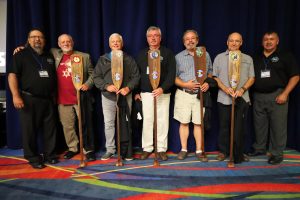
Regional Awards: At the Great Lakes Business meeting, the region presented Great Lakes Outstanding Service Awards to Robert “Bob” Jackson (Bureau of Indian Affairs), Larry Wawronowicz (Lac Du Flambeau Band of Lake Superior Chippewa Indians), Ed Fairbanks (Leech Lake Band of Ojibwe), Chris Johnson (1854 Treaty Authority) and Kevin Willis (Little Traverse Bay Bands of Odawa Indians).
The Great Lakes Region also selected several individuals to recognize this year for their outstanding service to the region. Lac Du Flambeau Band of Lake Superior Chippewa Indians Chairman John Johnson was awarded the Glen T. Miller Tribal Leadership Award, Chief Conservation Officer for the 1854 Treaty Authority Clay Rumph was awarded Conservation Officer of the Year, Biologist of the Year was awarded to Mark Luehring, Inland Fisheries Biologist for the Great Lakes Indian Fish & Wildlife Commission (GLIFWC) and GLIFWC Inland Fisheries Technician Edward White earned the Technician of the Year Award.
Election Results: Don Reiter was re-elected as the GL Region Director and Al Fox and Doug Craven retained their positions as Alternates.
2022 National Summer Youth Practicum & Alumni Spotlight
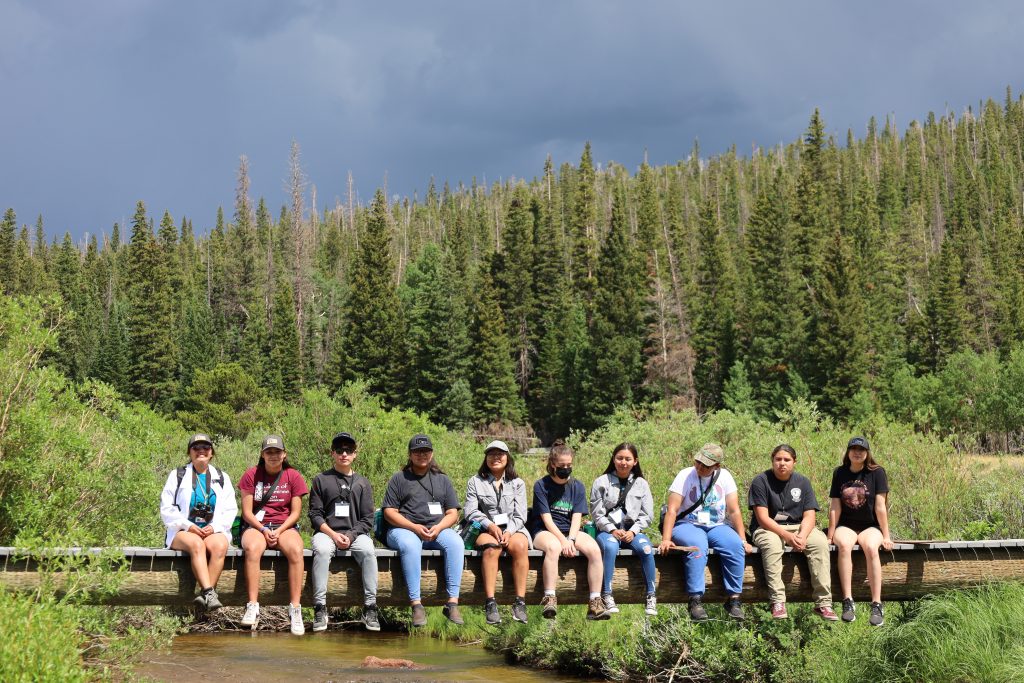
SYP students at CSU Mountain Campus.
A fundamental goal of the NAFWS is to facilitate the education of Native Americans and Alaskan Natives about Tribal fish, wildlife and natural resource stewardship. Although the NAFWS conducted periodic regional training and workshops on various aspects of natural resource management, these training opportunities were for individuals working as professional natural resource managers. Thinking of the future, the NAFWS developed the Environmental Awareness Summer Youth Practicum (SYP) with the goal of empowering and educating Native Youth about the preservation, conservation, and protection of Mother Earth.
As our future conservation practitioners, decision-makers and stewards, the NAFWS SYP is designed to introduce Native students to Tribal natural resource management and career opportunities available in natural resource professions. The first SYP was held at Ranch A Education Center in Beulah, Wyoming in 1991. With few exceptions, the SYP has become an annual event with both national and regional practicums hosted at sites across the country including the University of Wisconsin-Stevens Point, Mt. Evans Outdoor Lab School in Greenwood, CO, Mississippi Band of Choctaw Indians Reservation, Camp Chapparal in Yakama Nation, and YMCA of the Rockies in Estes Park, CO.
The SYP is a unique and vital program that incorporates the cultural and historical aspects of natural resource management as well as Traditional Ecological Knowledge. A strong emphasis is placed on the involvement of Tribal elders and professionals who share their wisdom and knowledge of environmental stewardship. The staff provides a safe, caring, and inclusive atmosphere which creates an optimum environment for learning.
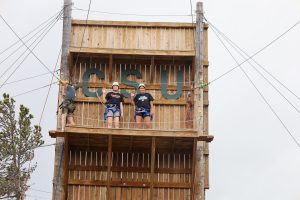
SYP students on the CSU Mountain Campus high ropes course.
The 2022 National Summer Youth Practicum (SYP) occurred from Saturday, July 9 – Saturday, July 16, 2022. This week-long program was held at the beautiful Colorado State University (CSU) Mountain Campus, CSU Main Campus (Fort Collins, CO), YMCA of the Rockies (Estes Park, (CO)), and the Rocky Mountain National Park. Ten students from 6 Tribes attended the practicum and heard presentations from 23 speakers and participated in workshops on field-sketching, fisheries, forestry, wildlife corridors, and Tribal conservation law enforcement. They tackled the CSU Mountain Campus ropes course, developed trust through team building exercises, learned to flyfish, and competed in a Tribal wildlife management challenge. The SYP concluded with the students presenting their wildlife management plans to an audience of their peers, instructors, parents, and NAFWS board and staff members.
SYP Alumni Spotlight
We have great pride for all of the National and Regional SYP Alumni and their many accomplishments.

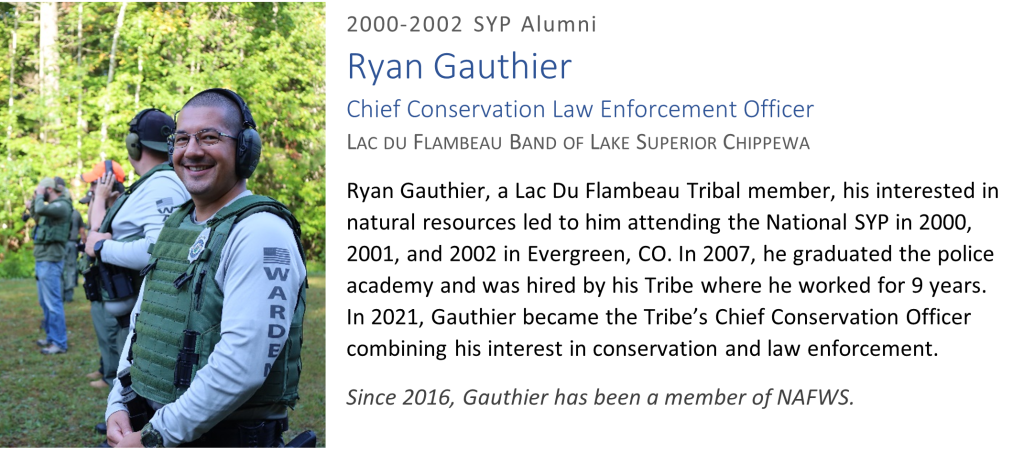
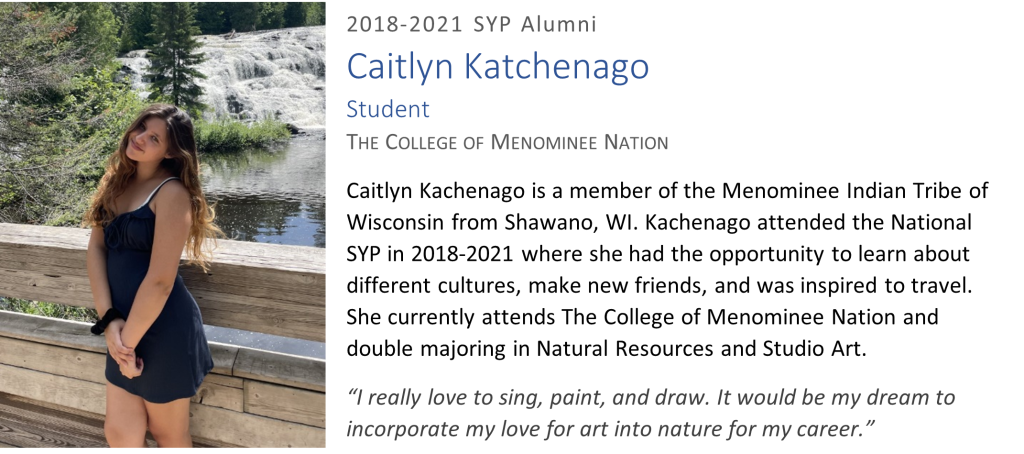
NAFWS Awarded $170,000 for National Tribal Climate Resilience Work
First Nations Development Institute awards NAFWS two grants to advance conversations around climate resilience in Alaska and the Continental U.S.
Read the Press Release.
Tribal Highlights
Southwest Region Tribes are on the Forefront on Wildlife Migration
NAFWS Wildlife Connectivity Coordinator Visits Wildlife Corridor Projects in Pueblo of Santa Ana and Southern Ute Indian Reservation
Shailyn Miller Wiechman
Following the 2022 Southwest Regional Conference, I visited the Pueblo of Santa Ana Natural Resource Department’s wildlife corridor project and saw the migration corridor of where elk, deer, mountain lions, bears, and antelope move throughout the landscape. Range and Wildlife Division Manager, Glenn Harper’s hope for the future is to build wildlife crossings for safer migration and improved habitat connectivity.
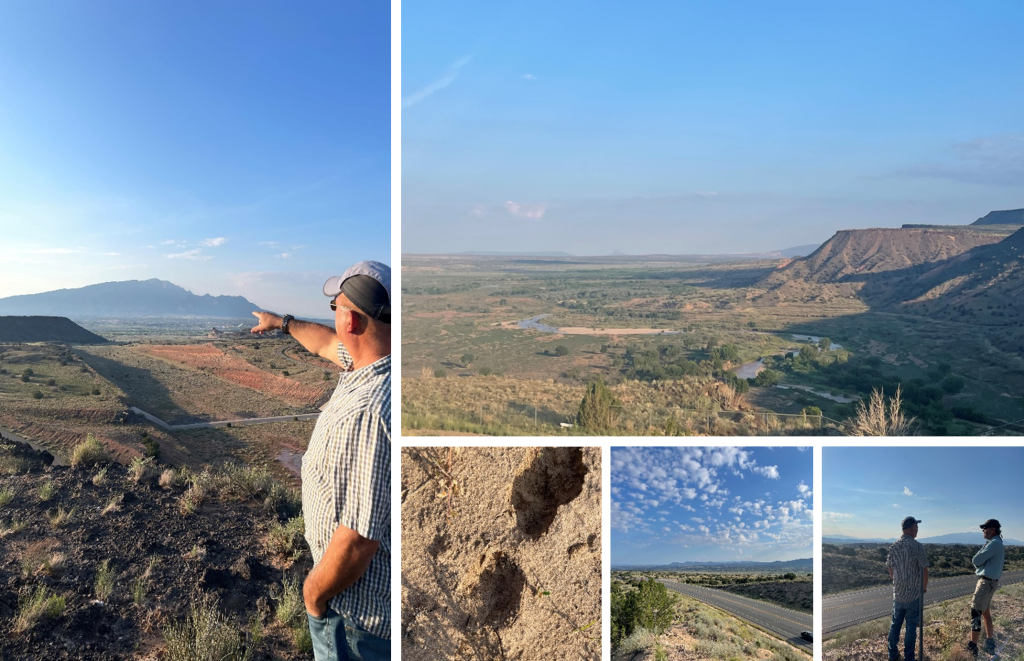
Glenn Harper (left), Jemez River (top right), tracks (bottom left), potential future overpass location (bottom middle), Glenn and his staff member (bottom right).
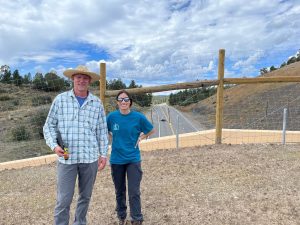
Aran and Shailyn on top of the overpass.
In September, I visited the Southern Ute Indian Reservation and spent the day with Aran Johnson, Wildlife Biologist, and his technician Danielle. They showed me around the Natural Resource Department building, Lake Capote Recreation Area, and multiple wildlife crossing structures. These crossing structures included an underpass that was installed in 2021 and an overpass that was recently finished in the summer of 2022 spanning three lanes of traffic. I even was able to get my hands dirty and assist them with the removal of hundreds of yards of fencing wire around the overpass to prevent wildlife from getting caught.
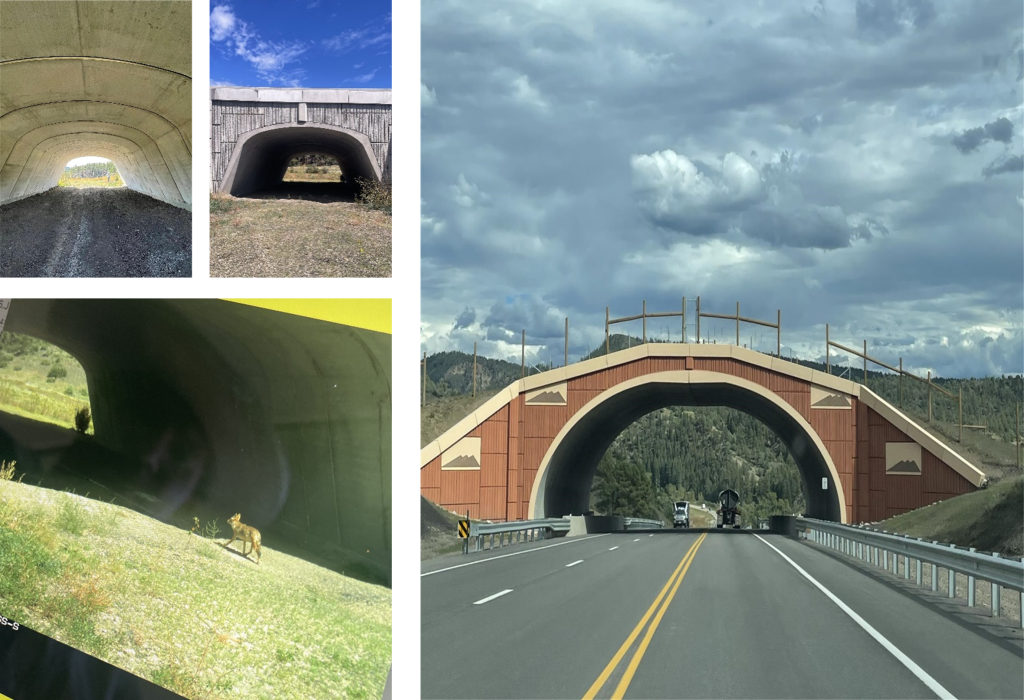
View from inside the underpass (top left), underpass ground-level view (top right), coyote using underpass (bottom left), and overpass (right).
Shailyn Miller Wiechman
Wildlife Connectivity Coordinator
NAFWS Welcomes Four New Staff Members
This fall, NAFWS welcomed two new Fish & Wildlife Biologists, Chad Avery and Christine Longjohn, our first Assistant Tribal Climate Resilience Liaison for the Alaska Region, Kaitlyn Demoski, and Alaska Tribal Climate Resilience Intern, Hannah Juliussen. Read their bios below:
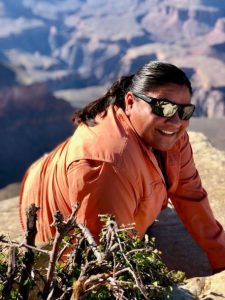
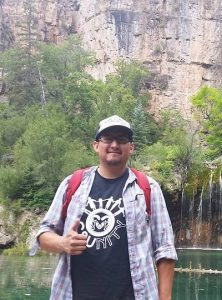


New hires Christine Longjohn, Chad Avery, Kaitlyn Demoski, and Hannah Juliussen.
Christine Longjohn – Fish & Wildlife Biologist
Christine is an enrolled member of the Navajo Nation. Her family comes from the Red Mesa area of the Navajo Nation in Utah. She graduated from Utah State University in 2020 with her undergraduate degree in Fisheries and Aquatic Sciences with two minors (Hydrology and Geographical Information Systems). She continued into graduate school at Utah State University to complete her degree in a Master’s of Ecological Restoration in 2022. Christine previously worked with Federal and State management agencies in suitability assessments and collection of In-stream or riparian habitat data. She recently worked with The Nature Conservancy to assess the potential restoration sites on the San Juan River, located on the Navajo Nation.
Christine’s passion is working with wetland habitat resiliency. She changed her career, specifically, to work with the tribes and protect our waters. She loves to be outside and you will see her fly fishing or hiking. She is excited to work with many tribes across the Unites States.
Chad Avery – Fish & Wildlife Biologist
My name is Chad Avery, Navajo/Shawnee/Lakota. I am from the four corners area (NM/CO/UT/AZ), but call Durango, CO my home. In May 2018, I attained my Master’s in Natural Resource Stewardship. While completing my degree I worked for the United State Forest Service in the vegetation management, fuels and timber department where I coordinated, managed, and provided oversight on projects while working with several agencies and tribal communities.
My professional and academic energies are directed towards cultural and natural resource management, while incorporating an Indigenous framework. As an Environmental Compliance Specialist for the Southern Ute Environmental Programming Division, I engaged with the tribal community to coordinate inspections, as well as prepared and presented reports to appropriate departments and to tribal council. In the winter, as a side gig, I also enjoy teaching snowboarding at my local ski area to both children and adults which brings me a lot of joy.
Kaitlyn Demoski – Assistant Tribal Climate Resilience Liaison
Kaitlyn is Dena’ina Athabascan born and raised in Alaska, where she built a career on 11 seasons of field work in Forestry, Parks and Outdoor Recreation, and conservation work. Through her work history she has gained valuable skills and experience in natural resource management ranging from stream bank restoration to group facilitation of educational activities. She completed her undergraduate degree in Environmental Studies in southwest Colorado at Fort Lewis College and returned home every summer to work and play under the midnight sun. Through her employment, Kaitlyn has earned her wildland firefighting Red Card and S-212 chainsaw certification; built trails and campgrounds; maintained local, state, and tribal parks; assisted with community outreach; worked on interior Alaska forest inventory projects, participated and led the monitoring and removal of invasive plant species; worked with youth introducing them to the outdoors; and currently sits on the board of her local Citizen Advisory Board for Alaska State Parks. In her spare time, Kaitlyn enjoys hiking, kayaking, reading, beading and spending lots of time with her loved ones.
Hannah Juliussen – Alaska Tribal Climate Resilience Intern
Hannah is the new Tribal Climate Resilience Liaison Intern for the NAFWS. She was born and raised in Alaska and is an enrolled member of the Kenaitze Indian Tribe. She recently obtained her B.S. in Conservation Biology from Union University located in Jackson, Tennessee where she currently resides.
NAFWS Education Update
Ashley Carlisle, Education Coordinator
2022 National Summer Youth Practicum
The 2022 National SYP was a blast! We had ten wonderful, smart and engaging students from across the country that participated in this year’s program. Our agenda was filled with great activities ranging from a ropes course challenge, fly fishing, field trip to Colorado State University’s (CSU) Warner College of Natural Resources and presenting their final presentations on their wildlife management proposal plan. We had 23 guest speakers and presenters that engaged with our students. A more detailed report can be found on our website.
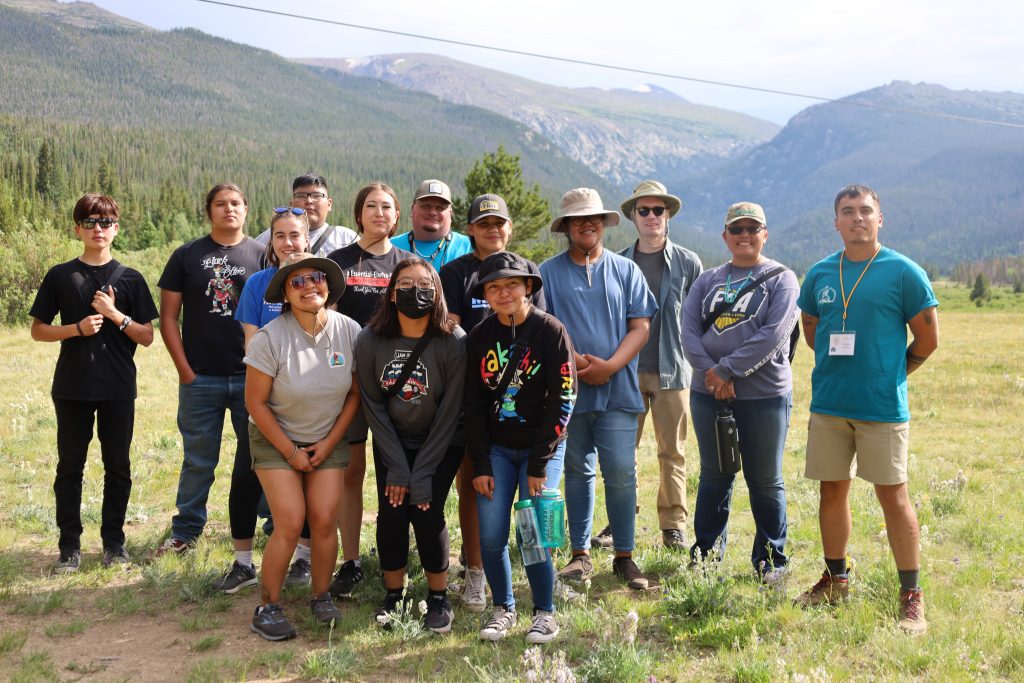
SYP students and staff after tackling the CSU Mountain Campus Ropes Course
A new aspect we added to this year’s National SYP is the wildlife management challenge, where we challenged the students to work together a create a mock elk wildlife management proposal. The group that had presented well and went beyond in their proposals were offered and awarded a funded trip to attend the 2023 NAFWS National Conference in Anchorage, Alaska! This group will be presenting their plan and about their time at the National SYP at the national conference. We would like to send a formal congratulations to Jovanni, Kate, Dylane and Danika – the students that will be attending the 2023 NAFWS National Conference!
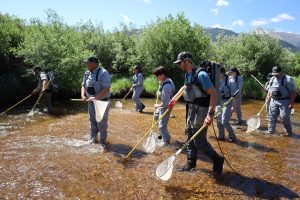
Electrofishing demonstration from USFS.
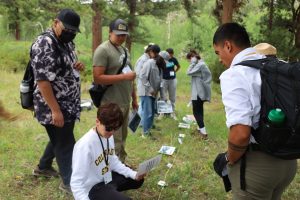
Students put together a timeline of Rocky Mountain National Park.
Throughout the practicum, we were joined by artists and workshop leaders Alberto Rey and Jason Dilworth from State University of New York at Fredonia. Following the practicum, they developed a publication documenting the event that is now available.
NAFWS would like to thank our funders and funding sources of our National SYP: Bureau of Indian Affairs (BIA) Youth Initiative Grant, Orvis, Bass Pro Shop’s and Cabela’s Outdoor Fund, U.S. Forest Service and CSU’s Native American Cultural Center.
National & Regional Scholarships
NAFWS has awarded three national and 7 regional scholarships to college students from the Southwest, Great Lakes, Great Plains, Alaska, Pacific and Southeast regions. We continue to send prayers and best wishes to all of the Native Scholars! See our website to learn more about the NAFWS Scholarship Recipients.
If you are interested in being involved in our planning of our 2023 National SYP or any of our youth programming.
Conservation Law Enforcement Officer Update
Robert Romero, CLEO Consultant
Greetings membership and NAFWS friends! It’s been another busy quarter filled with meetings, conferences and training for our conservation officers.
The Great Lakes Region held their annual Chief’s Meeting that was hosted by the Shakopee Mdewakanton Sioux Community (SMSC) from July 24-29, 2022. During the week, 23 CLEOs from 10 different Tribal Conservation Departments participated in Act of Violence/Threat Response training that was presented by SMSC and Pokagon Band of Potawatomi instructors. The one-day training focused on active shooter events in urban areas. Additionally, the officers participated in a two-day Humminbird Sonar Technician certification that was presented by Dive Rescue International. The training was designed to provide first responders with various techniques to conduct underwater search operations using side imaging sonars.
During the week of August 22, 2022, both the Southwest and Pacific Regions held their regional conferences. The Southwest Regional Conference was hosted by the Santa Ana Pueblo, NM and was attended by 25 CLEOs from 9 different Tribes. Desert Mountain Medical provided 16 hours of Wilderness First Aid certification to the group of officers to prepare them to manage medical situations in remote locations. Seven officers also competed in the Practical Pistol Competition (PPC) to identify the Southwest Shoot Team that will compete at the 2023 Annual National Conference in Anchorage, AK. Kevin Myore of the Ute Tribe took the honor of Top Gun this year! See the table below for the remaining team and alternate results:
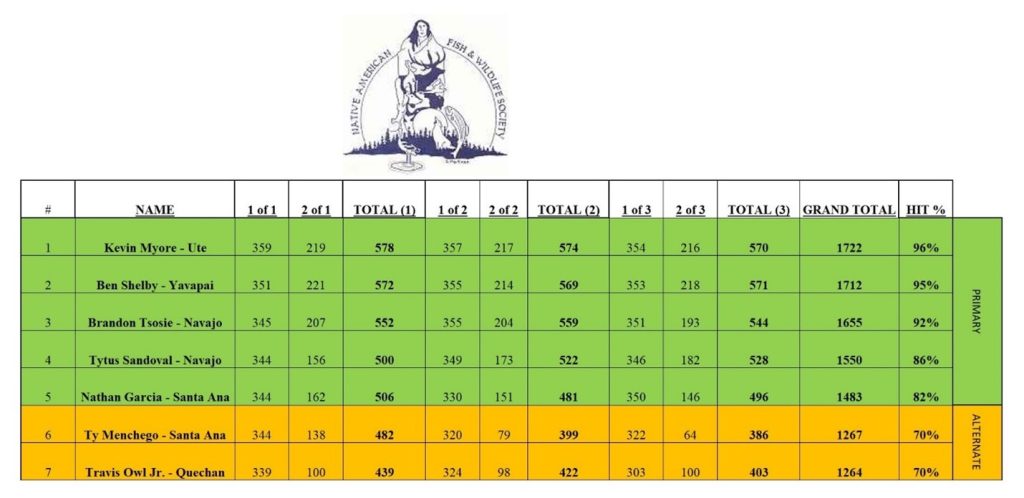
The Pacific Regional Conference was hosted by the Bear River Band of the Rohnerville Rancheria (BRB) in California and was attended by 5 officers from 3 different Tribes. The Alabama Fire College provided one day of Illicit Drug Response Awareness certification training to the group of officers. A PPC was completed, however, a Pacific Shoot Team remains to be established.
In mid-September, the Standing Rock Sioux Tribe hosted an Unmanned Aircraft Systems (UAS/drone) training that was presented by the Great Lakes Drone Company. Officers who attended this two-day training were first encouraged to complete an online FAA Part 107 training course to prepare for course lectures relative to UAS operations regulations, and participation in both drone simulator operations and actual drone flight operations. The class was attended by 9 officers from 4 different Tribes.
Finally, in late September, the Lac Courte Oreilles Tribe hosted the Great Lakes Regional Conference in Hayward, WI. A total of 31 CLEOs from 12 different Tribal enforcement departments attended the conference and participated in a two-day Forensic Interview and Interrogation Techniques for Conservation Officers course that was presented by Jeffrey Baile. The training focused on various methods and techniques for officers to apply when making field contacts or during investigations to obtain confessions. Twenty-seven Great Lakes Region officers competed in the PPC to establish their 2023 Annual National Conference Shoot Team, and Tim Mallory of the Little Traverse Bay Band of Odawa Indians took the Top Gun honors!
See the table below for team and alternate results:
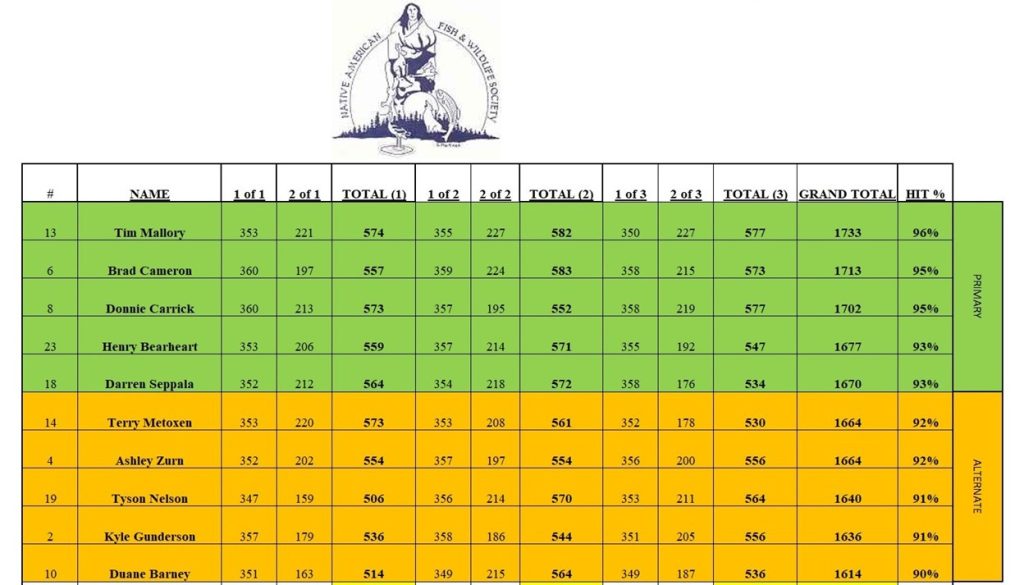
Special thanks to Beaufort Joe (Three Affiliated Tribes) and Kevin Willis (Little Traverse Bay Band of Odawa Indians) for supporting the Southwest and Pacific Regional PPCs, respectively. We appreciate your leadership and willingness to assist in my absence.
Thank you all and stay safe!
Robert
CLEO Intern Gets Hands on Experience
Trenton Chalmers
Standing Rock Sioux Tribe Council Meeting – August 9, 2022
The tribal council meeting was an interesting opportunity. There were a few elders in attendance as well. I did not get the chance to meet with the Standing Rock Game and Fish director Jeff Kelly unfortunately. The topics discussed related to the policy-making from previous council meetings. There wasn’t anything pertaining to the management or enforcement of the Game and Fish department. I had to leave before the meeting was over to return to Bismarck and prepare for work.
Three Affiliated Tribes Ride Along – August 10 – 12, 2022
On Wednesday, August 10, I was riding along with Officer Joe. He was exceptionally educated on Conservation Law. He gave me a very good description of what it means to be a Game Warden for TAT. We had a unique experience as Officer Joe assisted the local TAT Police Department in a call. There were three arrests made and I rode along as we transported an individual to the TAT jail. I watched the whole process of arresting and booking someone who breaks the law.
On Thursday, August 11, Officer Yellow Bird picked me up bright and early. We rode to the segment that he was assigned to. We had good educational conversations on what it means to be a Conservation Law Enforcement Officer. He gave me some good perspectives and changed my mind about Game Wardens, while at the same time pondering the thought of doing it as a career myself. We came upon a unique situation where a young fawn was killed by domesticated dogs. The kill was fresh, and he had to alarm the owner that the next time will be the dogs’ last.
On Friday, August 12, Officer Martinez picked me up earlier than the day before. We got out and on the road as Officer Martinez guided me around the segment of tribal land that she is assigned to. We discussed the route to becoming a Game Warden and how she became one herself. We met up with Officer Joe at the TAT Game and Fish headquarters to load up the boat. We put the boat out on the lake, and he showed me the ropes on how to approach watercrafts and ask for their fishing licenses. We conducted some fishing license inspections before bringing the boat ashore and calling it a day.
All in all, I had a blast! I would 100% consider a Game Warden position if offered one. I understand wholly now how important enforcing is to the management of fish and wildlife. The TAT were outstanding and very professional. They were welcoming and ready to give me any knowledge they had.
UPCOMING EVENTS
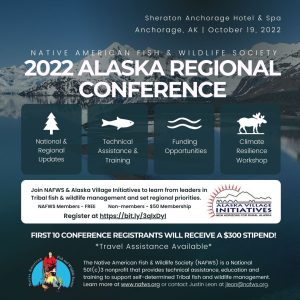

The 2022 Alaska Regional Conference hosted by the Alaska Village Initiatives will be held on October 19, 2022 at the Sheraton Anchorage Hotel & Spa in Anchorage, AK. The first 10 people to register will receive a $300 stipend! We are looking for dedicated individuals to run for the open Alaska Regional Director and Alternate positions.
NAFWS will be hosting the 2022 Northeast Regional Business Dinner during the Fall 2022 New England Tribal Leaders Summit & Environmental Conference. Registration is free through the conference website. We are also looking for someone to fill the vacant Northeast Regional Director and Alternate positions. Please consider running to represent your region!
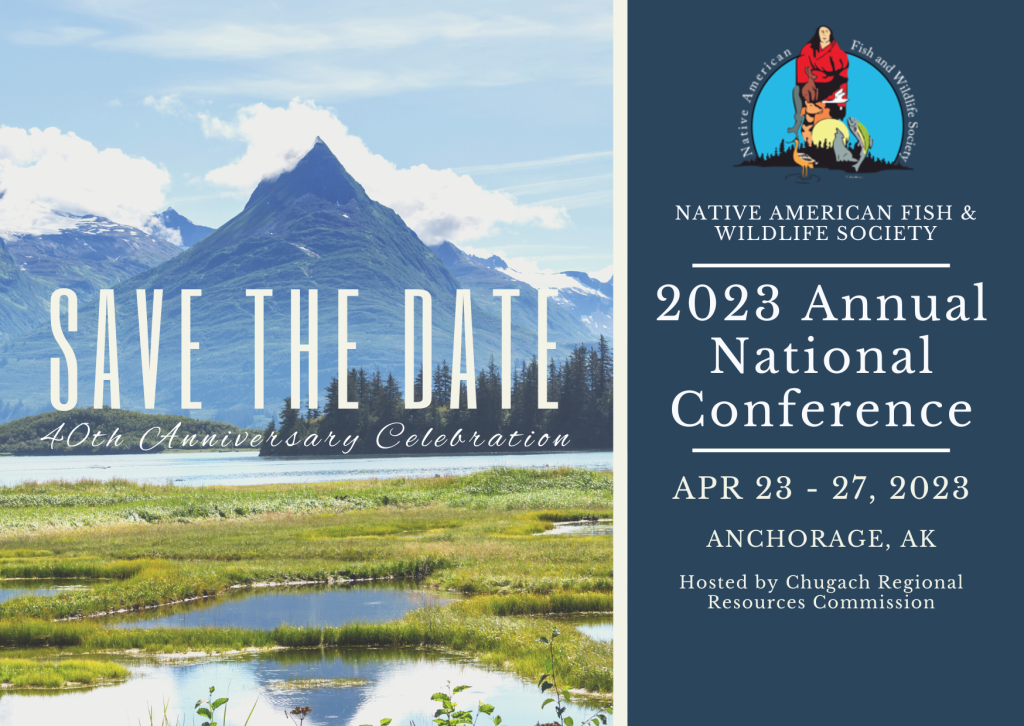
We are excited to announce that NAFWS will be celebrating our 40th Annual National Conference on April 23-27, 2023 in Anchorage, AK. The conference will be hosted by the Chugach Regional Resource Commission. We look forward to seeing everyone there!
Fish & Wildlife News: Invasive Species, Wildlife Disease, and Endangered Species
This issue of fish and wildlife updates include an Zoonotic Disease Corner article from Dr. Tolani Francisco on the intersections of human health and hunting and harvesting practices, news of invasive zebra mussels found in Colorado waters, and updates on the Southwest Tribal Wolf Working Group.
Zoonotic Disease Corner
Safe Hunting, Safe Harvesting
Dr. Tolani Francisco, NAFWS Zoonotic Disease Expert
Learn about how hunting and harvesting practices are linked to human health and tips to keep yourself and your family safe.
Why be concerned about One Health when hunting and harvesting?
It is fall, many are hunting and preparing for the long upcoming winter months. Much like our native ancestors, we give thanks for a successful harvest and for the opportunity to still be able to hunt and harvest for our families. As native hunters harvest animals, it is important to remind of proper measures all need to take to ensure the meat they harvest is safe for their families to consume.
In general, one shot to the heart is the best place to ensure the animal has died in a humane (least amount of struggle and pain). This is important for a number of reasons. Lactic acid (what causes sore muscles when exertion has taken place) will actually alter the taste of the meat and decreases the amount of time before decay begins or increases the likely hood of spoilage when temperatures are above 40 degrees Fahrenheit. Blood contains large amounts of heavy metals such as Iron and these leave deposits in the vessels which also affects the taste of meat. This is the primary reason meat is hung or cured for up to 21 days, decreasing the blood residual and therefore heavy metal deposits in the muscle tissue.
Perhaps a more important reason for a clean heart shot when hunting is the potential for perforating the intestines or stomach. The gastric contents contain high numbers of bacteria which can result in vomiting and diarrhea in humans. The fecal bacteria can very easily contaminate the large muscle bundles during field dressing, especially if the animal has been gut shot. Fecal or coliform bacteria can be life-threatening to persons with compromised immune systems which include young children, the elderly or people with chronic health conditions such as diabetes, high blood pressure, long COVID, cancer and a host of other chronic health conditions. In severe cases, these bacteria can result in organ failure such as kidney failure also known as Acute Hemolytic Uremic Syndrome which often results in either daily dialysis or organ failure and even death.
It is important to field dress animals using clean (washed with soap and water) instruments (knives), where possible, use of gloves and preventing any aspiration of any gut contents or spraying the face. If gut contents saturate clothing, it is important to launder these with antibiotic soap or a dilute (1 cup in 5 gal of water) bleach solution separate from normal family laundry.
Urine (bladder liquid) can also contain organisms if the animal has certain health conditions such as leptospirosis. Most hunters know to not perforate the bladder or allow any urine to penetrate the muscle tissue. Urine can also greatly alter the flavor of the meat and affect the spoilage time as well as act as a vector for any urine organisms including prions which cause Chronic Wasting Disease.
Meat should always be held at temperatures below 40 degrees Fahrenheit to decrease bacterial growth. When making jerky or drying meats, it is often helpful to brine the meat in salt which will help decrease bacterial growth leading to either meat spoilage or decay. Grinding of meat increases the surface area where more bacteria can locate. This is the main reason hamburgers are always cooked to reach an internal temperature of 165 degrees Fahrenheit. If prior to harvest, the animal does not appear in good health, it is advisable to not harvest for human consumption.
Happy Hunting and Harvesting this fall, just be smart and keep your families safe and healthy.
Dr. Tolani Francisco is a founder and president of Native Healing LLC, a 501(c)3 organization dedicated to serving tribes through animal health. NAFWS contracted Dr. Francisco to assist Tribes with zoonotic disease concerns and she is available for technical support at [email protected].
Invasive Zebra Mussel Identified in Colorado Lake
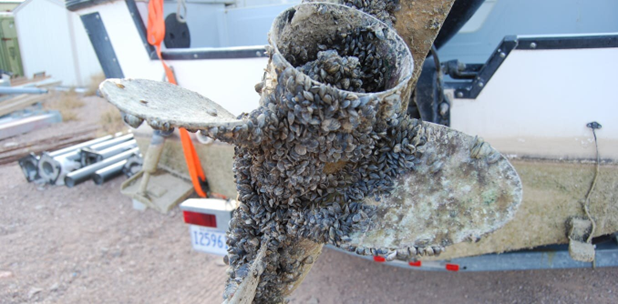
This summer the Colorado Parks and Wildlife (CPW) discovered a single adult zebra mussel for the first time in state history. Biologists found the highly invasive species on a PVC pipe at Highline Lake during routine sampling. The department is sending staff to the lake northwest of Grand Junction so it can determine the full extent of the threat. So far, CPW has only found one zebra mussel, which doesn’t necessarily mean there’s widespread invasion, but if a large population is discovered, there isn’t much CPW can do.
The small freshwater mussel, native to lakes in Russia and Ukraine, is known for reproducing quickly and overrunning and outcompeting other species and threatening native mussel survival. One zebra mussel can filter up to a liter of water per day, which may sound like a great thing, but it absolutely is not. They are filtering out the plankton, which is the basis of the aquatic food web, and will cover every available square inch of substrate including native mussels, and smother them. Highline Lake is an open water system — meaning that there is water coming in and water going out — there are no viable chemical solutions that we could use to eradicate the species from the reservoir.
CPW is inspecting and decontaminating all vessels leaving the park to make sure boats won’t spread the mussels, which can attach to any solid surface. Those checks will be added on top of the standard inspections for boats entering all Colorado waterways. Both roadside and boat launch inspection and cleaning stations are effective ways to help slow the spread of zebra and quagga mussels. Every year both Tribes and State inspection stations detect hundreds of mussel-infected watercraft that would have introduced the invaders into more waters.
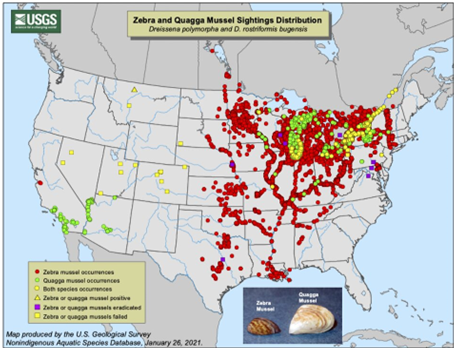
For more information on controlling the spread of these invaders or inspection stations and cleaning stations visit usgs.gov or contact NAFWS staff.
Water Shortages in the Colorado River Basin Impacts on Endangered Species & Introduction of Invasive Predators
Southwest Tribes are met with extreme challenges of water shortages in the Colorado River Basin. The over allocation of water rights comes firsthand as the main challenge in the court rooms. Grandfather rights are the tier of the complex order of where all the water is moved in the watershed. Large dams and the operators are in control, by forecasting measures, of these movements and during which time of the year these releases will occur. Many southwest Tribes are considered in the oldest grandfather right’s but have only ‘paper water’ or the rights to water, but this does not translate to real water in hand. Tribes are faced with challenges in settling court claims with their respective states and securing the funding to build and develop infrastructure to capture those water rights. With major cities (e.g., Denver, Phoenix, Las Vegas, and Las Angeles.) continuing to develop and Tribes increasing, where does that leave fish and wildlife species?
There are many endangered species in the Colorado River Basin with each being separated by major dams (e.g., Flaming Gorge, Lake Powell, and Hoover). As climate change impacts the snow dominated system, water levels in these dams have hit critically low levels causing great concern for threatened species. The humpback chub is one example as flow levels are impacting spawning. The species, which was recently considered to step down from endangered to threatened, now faces another threat, the introduction of invasive predators. Low water levels have allowed predators including smallmouth bass to bass below Glen Canyon Dam creating additional pressure on the humpback chub which is now anticipated to remain listed as endangered. Learn more.
While extensive collaboration efforts are underway, the future of water levels and the connection of the water ecology will continue to be a battle. Major water managers and Tribes will be meeting at the main Colorado River Water Users Association (CRWUA) conference next month in Las Vegas to try and come up with innovative solutions. Learn more.
NAFWS in the News
Meanwhile, Congress is set to pass a huge wildlife conservation bill with bipartisan support
Recovering America’s Wildlife Act would funnel millions of dollars into saving overlooked species.
Impacts Of Highly Pathogenic Avian Influenza to Native American Cultural Practices
NAFWS Request for Information from the Department of the Interior.
Recent APHIS Tribal Relations Training and Workshop Highlights
APHIS hosted a Tribal Biologist Workshop for Disease Detection and Surveillance at the Great Lakes NAFWS Regional Conference.
